Sea Level Rise and Some of Our Most Important Monuments

About a month ago, Rolling Stone Magazine published: “What Happens When a Superstorm Hits D.C.?” Its lead image-
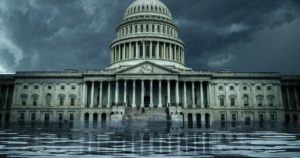
Another image shown in the article is of a section of flood wall along 17th St. in D.C. that must be manually installed ahead of a major storm so the Potomac Park Levee System, maintained by the National Park Service (NPS), running from near the Lincoln Memorial to the Washington Monument, becomes whole as a flood barrier.
The barrier system’s movable aluminum panels are stored in a N.E. D.C. NPS maintenance yard “amidst picnic tables and garbage bins,” as the Rolling Stone article put it. Further, they might fail at installation for reasons author Justin Nobel state in his piece.
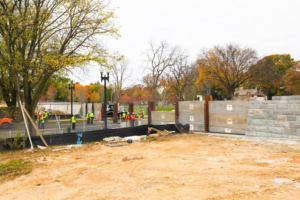
Quoting again from the article: “When the big storm hits D.C., the resulting disaster may not kill as many as Katrina, or flood as much physical real estate as Harvey, but the toll it takes on American institutions will be unfathomable. The storm will paralyze many of the agencies that operate and defend the nation, raising the specter of national-security threats. ‘Imagine,’ says Gerald Galloway, a disaster and national-security expert at the University of Maryland who served 38 years in the military, ‘the world waking up some morning to see an aerial photograph of Washington, D.C., with everything from the Lincoln Memorial to the grounds of the Capitol under-water – that certainly does not speak well for the United States’ preparedness.'”
Hurricane Isabel of 2003, a Category 2 storm, knocked out power at two sewage treatment plants upriver of D.C. with the result that 96M gals. of raw sewage was sent flowing towards the National Mall. The damage to property in MD and D.C. was worth some $1.23B in today’s USD.
A couple of weeks ago I attended a webcast of a presentation at the National Building Museum titled: “Is D.C. Ready for a 500-year Flood Event”? The short answer was: a qualified no.
But, I was rather fascinated by slides shown by Jeffrey Gowen, branch chief of facility operations, National Mall and Memorial Parks, NPS, whose responsibility includes safekeeping of the monuments shown here. Note that the blue line superimposed along the monument images represents the 100-year flood mark:
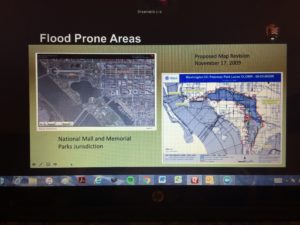
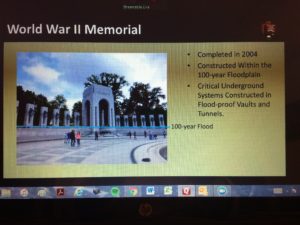
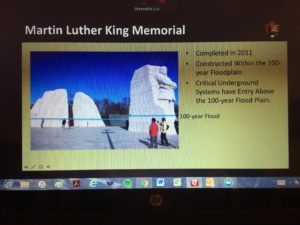
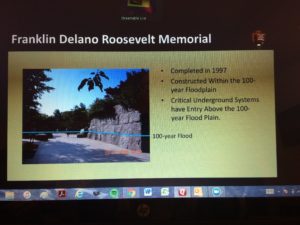
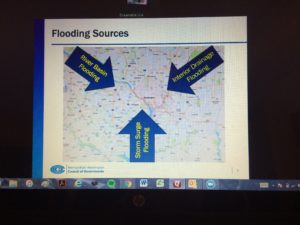
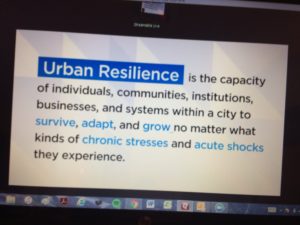
Doesn’t make me feel any better that other areas in the country are also ill-prepared. Recall that Hurricane Harvey hit the 500-year flood mark in Houston/Harris County, TX. That makes for the 3rd year in a row that region has been hit by a 500-year storm event. Estimated price tag to rebuild this time: upwards of $150B.
And, if you wonder what the 5-year mark since Hurricane Sandy shows for more effectual infrastructure on the Eastern Seaboard looks like, see my post here about restorative efforts. And, a very recent Washington Post article about the matter that’s not encouraging. What a ginormous problem.
Let’s finish protecting our vital infrastructure in D.C. before paying as much as $10B for a border wall between peaceful nations. A more meaningful commitment to our national defense, I’d venture. The vulnerable monuments described here are bellwethers for the functioning of our national government.